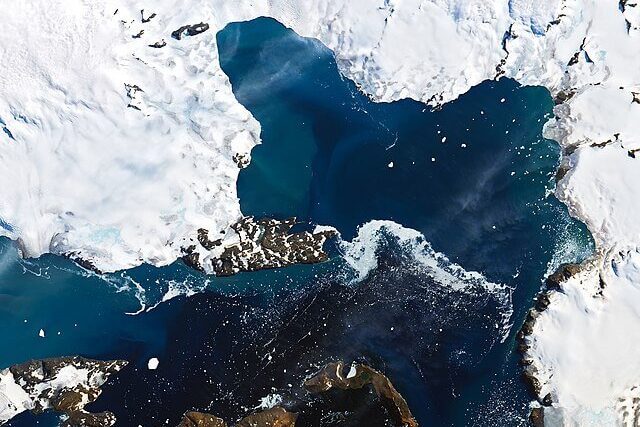
For the third consecutive year, Antarctic sea ice coverage has dipped below 2 million square kilometres, a threshold untouched since satellite observations began in 1979, as per the latest data from the US National Snow and Ice Data Center.
These last three years mark the lowest sea ice extents on record around the continent.
Scientists view this recurring trend as indicative of a significant “regime shift,” signalling an abrupt and critical transition in Antarctica’s sea ice dynamics.
The continent’s sea ice typically reaches its minimum extent in February during the Southern Hemisphere’s summer. On February 18, the five-day average sea ice cover plummeted to 1.99 million square kilometres, dipping further to 1.98 million square kilometres by February 21, nearing the record low of 1.78 million square kilometres recorded in February 2023.
“We’re confident the three lowest years on record will be the last three years,” said Will Hobbs, a sea ice scientist at the University of Tasmania.
In a stark departure from historical patterns, last year’s maximum sea ice extent in September hit a new record low, substantially eclipsing previous records by approximately 1 million square kilometres.
Despite a modest rebound in sea ice coverage observed in December during the refreeze phase, levels have since dwindled again to their current state.
While the thickness of Antarctic sea ice remains challenging to measure accurately, scientists suspect that the ice that did form might be thinner than usual.
“It seems plausible, and thinner sea ice could melt back more quickly,” she said.
Researchers are actively investigating the drivers behind this sea ice decline, with concerns mounting over the potential influence of global warming, particularly in warming the Southern Ocean surrounding Antarctica.
Reduced sea ice coverage diminishes the planet’s albedo effect, leading to increased ocean warming.
Walt Meier, senior research scientist at the National Snow and Ice Data Center, said that since most of the ice melts completely each summer “much of the ice is only 1-2 metres [thick]” – and even less near the ice edge.
“With the very low maximum last September, the ice was probably thinner on average in many areas, but it’s hard to say how much of an effect it has had on the rate of melt and the approaching minimum,” he said.
Antarctic ecosystems are intricately linked to sea ice, from fostering the growth of phytoplankton, essential for carbon sequestration, to providing crucial breeding grounds for penguins.
Studies led by Purich and Hobbs suggest a probable link between this sea ice decline and subsurface ocean warming, around 100 meters deep.
Hobbs’ recent research, published in the Journal of Climate, reveals a significant increase in sea ice variability since 2007 compared to the preceding years. This variability cannot be solely attributed to atmospheric changes, such as wind patterns, which have traditionally governed sea ice dynamics.
The study concludes an “abrupt critical transition” has occurred in Antarctica, but Hobbs said they could not say why.
“We don’t know what the driver of change is. It could be ocean warming or a change in ocean salinity,” he said. But it was also possible the change was a natural shift.
Although scientists have yet to pinpoint the exact cause of this abrupt transition, they warn that the loss of Antarctic sea ice is just one facet of broader environmental changes in the region, with far-reaching global implications.
The exposed Antarctic landmass accelerates ice loss, contributing to rising global sea levels.
In light of these findings, scientists advocate for greater attention to Antarctic changes and emphasise the urgent need for enhanced data collection efforts in and around the continent.
Hobbs said: “What we need is sustained measurements of ocean temperature and salinity underneath the sea ice. We need improvements in our climate models. And we need time.”
——————————————————————————
At Natural World Fund, we are passionate about stopping the decline in our wildlife.
The decline in our wildlife is shocking and frightening. Without much more support, many of the animals we know and love will continue in their decline towards extinction.
When you help to restore a patch of degraded land through rewilding to forests, meadows, or wetlands, you have a massive impact on the biodiversity at a local level. You give animals a home and food that they otherwise would not have had, and it has a positive snowball effect on the food chain.
We are convinced that this is much better for the UK than growing lots of fast-growing coniferous trees, solely to remove carbon, that don’t actually help our animals to thrive.
This is why we stand for restoring nature in the UK through responsible rewilding. For us, it is the right thing to do. Let’s do what’s right for nature!
Donate today at https://naturalworldfund.com/ and join in the solution!

